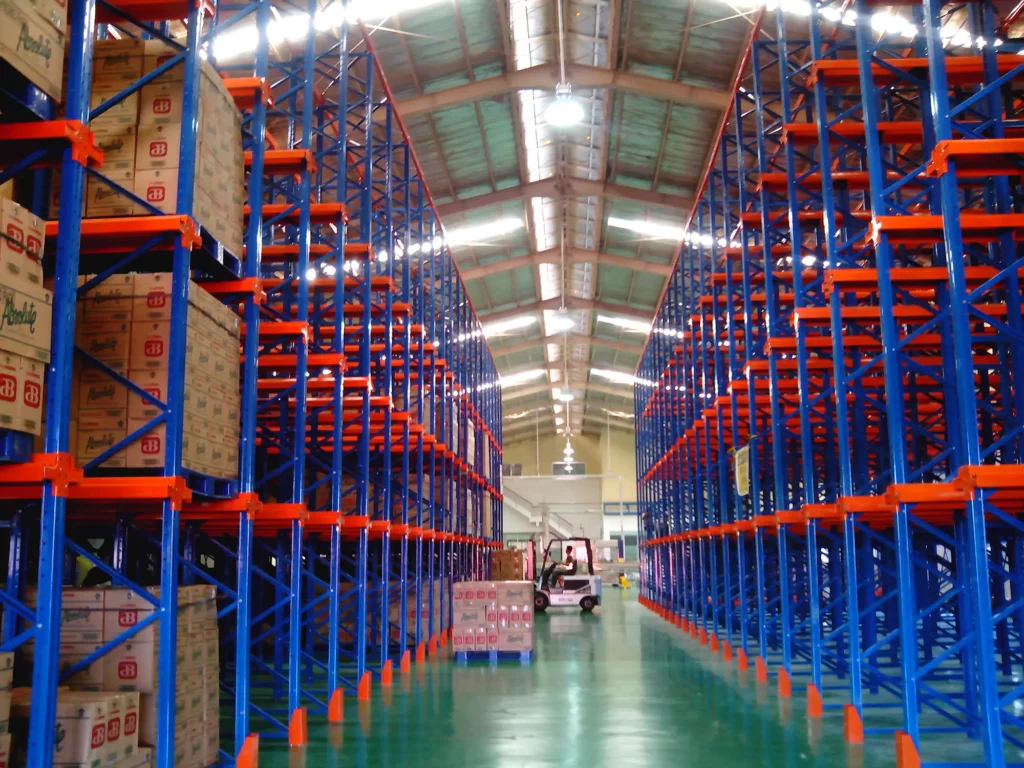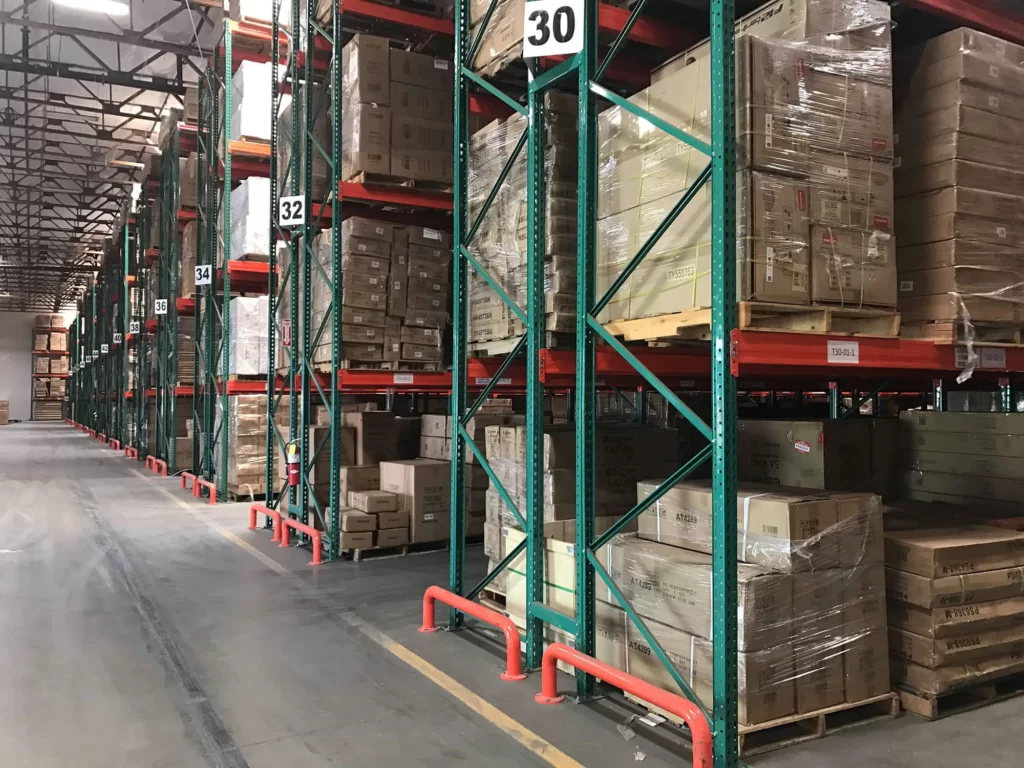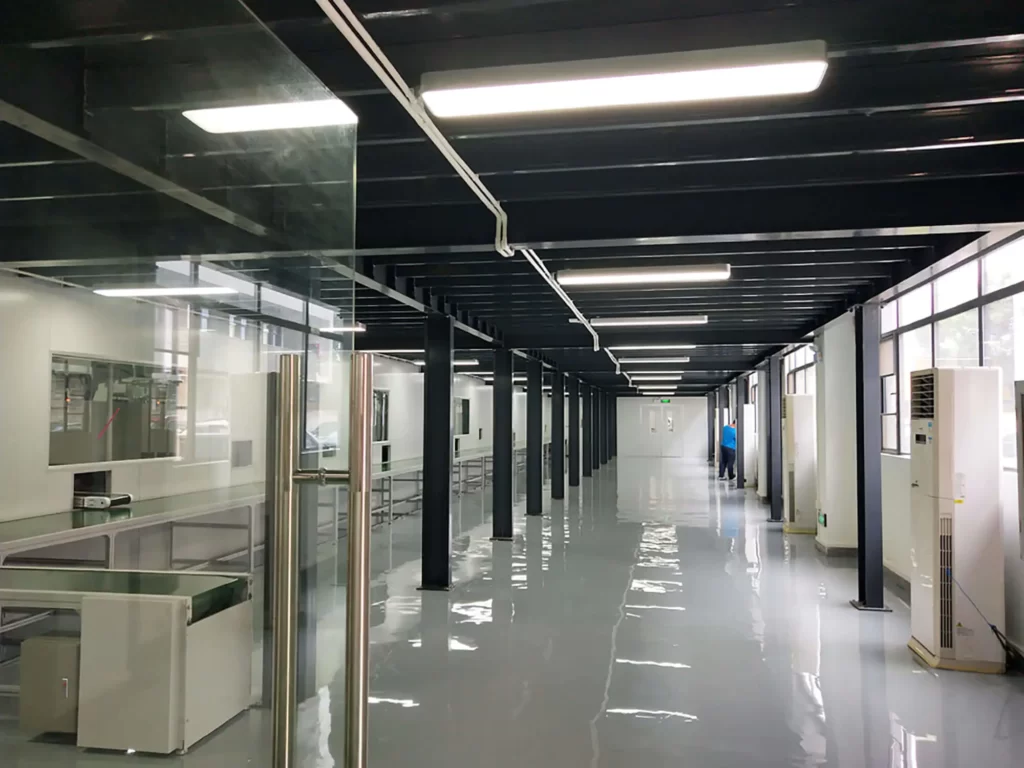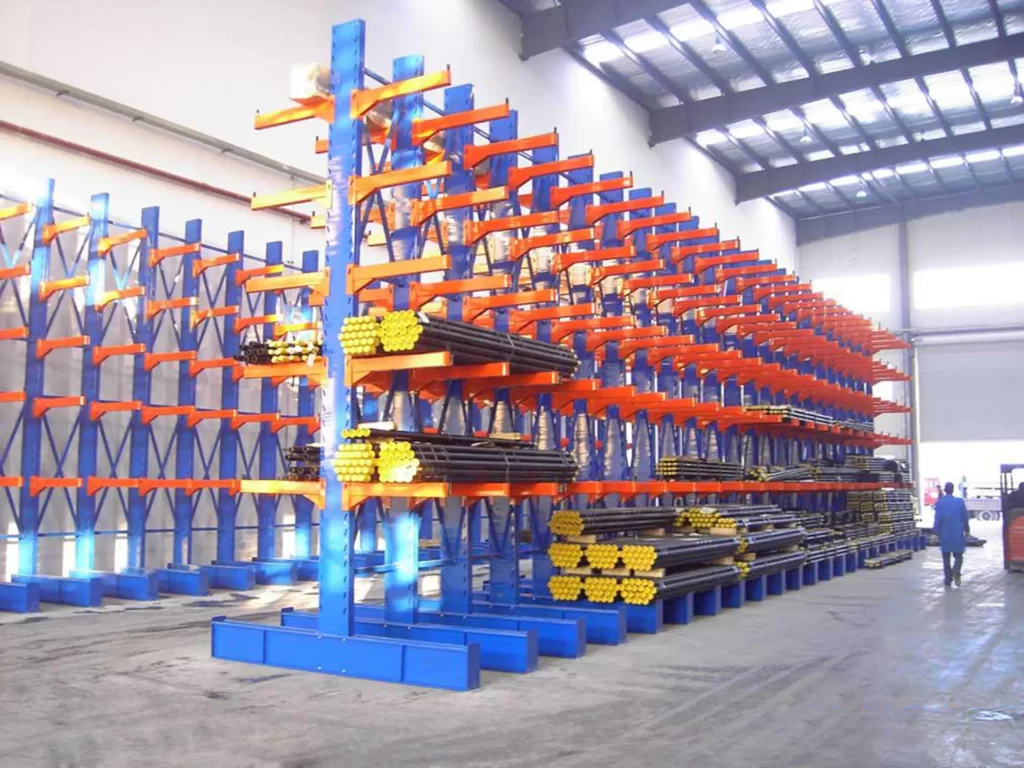Business success relies heavily on maximising warehouse efficiency. A well-selected storage unit maximizes space and improves operational workflow, productivity, and safety. With numerous options in the market, selecting the right one can be exhausting.
But worry not—this guide provides all the necessary information to help you make the perfect decision for your warehouse storage system, optimising workflows and achieving sustainable growth. So, continue reading this blog!
Figure no 1 Warehouse Storage Systems Guide
1) What is a Warehouse Storage Unit?
“A warehouse storage unit refers to a specific area within a warehouse set aside for the orderly arrangement of specific items, equipment or goods.”
Storage units are designed to accommodate high volumes of items and may be tailored to the shape, size or weight of the goods. Moreover, I must say that their primary objectives include space optimization, clutter minimization, enhanced safety, and streamlined efficiency during operations.
Also, in business contexts, arbitrary stacking of products can create a slowdown in work processes and even bring about some safety issues. That’s why to prevent this, businesses implement the use of commercial storage units like industrial shelving and organized storage systems warehouse that allow for vertical inventory placement instead of lateral, thus maximizing floor space readily available.
Figure no 2 Warehouse storage unit
- Warehouse Storage Units vs Self Storage Units
Warehouse storage units and self-storage units drastically differ in both functionality and purpose, despite sounding alike.
- Self-storage units: Most individuals and small businesses utilize self-storage offices. These units are basic spaces that are designed to hold personal properties such as decor, seasonal items, or even office documents. However, the self-storage units are ill-fitted to handle bulky loads and are not designed for the constant inflow and outflow of goods specific to businesses.
Figure no 3 Warehouse vs self-storage
- Warehouse storage system: Unlike the former, warehouse storage units are designed for industrial applications. These are constructed from robust materials that can withstand loads in excess of 1,000 kg per rack. Moreover, they are configured for forklift access and rapid transport of goods. Additionally, some units are even equipped with temperature or humidity control for more sensitive products like food or medicine.
2) Types of Warehouse Storage Units
In order to protect and arrange inventory, warehouses make use of distinct storage systems. Here, I’m going to discuss the five most common types with their structural description, benefits, and constraints.
i) Static Shelving
Static shelving is a fixed unit system comprised of vertical posts and horizontal shelves. These units are usually constructed from metal or high-strength plastic. However, static shelves can not be relocated and are usually bolted to the floor or wall in order to maintain stability. Moreover, the shelves are homogenously spaced though they are adjustable in some designs.
Figure no 4 Static shelving
| Advantages | Disadvantages |
| Easy to install and ideal for lightweight inventory. The organization of small parts is efficient and they are readily available. Ideal for quiet areas like parts rooms where manual picking is done. | Not designed to accommodate large or heavy objects (max load: 200 kg per shelf). Restricted adaptibility for changes in layout. Inadequate for fast-paced or high-traffic warehouses. |
ii) Warehouse pallet Racking Systems
Pallet racking is made up of vertical frames and horizontal beams that create levels of storage for palletized products. Pallets on each level are supported by the beams. These racks come in several types (for example, selective pallet racking, drive-in pallet racking, and push-back pallet racking) depending on access and density needs. A forklift is needed to load and unload goods onto the rack.
Figure no 5 Warehouse pallet racking systems
Moreover, there are many different sub-categories of warehouse pallet racking systems, for instance;
- Selective Pallet Racking
- Teardrop Pallet Racking
- Mold Racking
- Double Deep Racking
- Drive-In Drive-through racking
- Carton-flow racking
- Narrow aisle racking
- Heavy-duty pallet-racking
- Push back racking
- Gravity flow racking
| Advantages | Disadvantages |
| Very strong—can hold 2,000 kg of weight per rack level. Great in high retail and logistics traffic. Uses vertical space well | Higher cost and complexity than regular shelving. Requires trained operators. Regular inspection to beam damage, rack stability and screws requires attention. |
iii) Mezzanine Flooring
Mezzanine floors are elevated platforms built inside a warehouse, in the middle, between the ground and the roof. These provide extra storage, offices or workstations. Moreover, these floors are made up of steel frames and decking panels and are supported by columns hence, the size can be customized.
Figure no 6 Mezzanine Flooring
| Advantages | Disadvantages |
| Expand storage without changing the building footprint. Great for businesses with limited floor spaces. | Installation costs are higher than other systems. Must follow safety standards e.g. railings stairs, and weight limits. |
iv) Cantilever Racks
Cantilever racks as discussed earlier are a type of racking system and have vertical columns with horizontal arms extending outwards. The arms help support long or oddly shaped items like steel rods, lumber or pipes. There are no vertical supports at the front which allows easy loading from the open side of the forklift.
Figure no 7 Cantilever racking
| Advantages | Disadvantages |
| Best for long and awkward items of considerable length. The open layout facilitates the fast loading and unloading of materials. The heavy-duty arms can support more than 500 Kg each (depending on their length and thickness). | Requires more floor space for safety and balance considerations. Not designed for small parcel-boxed items. |
v) Mobile Shelving
Just like static shelving, mobile shelving provides an adjustable solution for the storage of manually picked items. Static shelving, however, surpasses mobile shelving in auxiliary capabilities; mobile shelving places far less demand on space. This system has shelves or cabinets mounted on sliding carriages which do not require fixed aisles.
Figure no 8 Mobile shelving
Mobile shelving units are constructed on level tracks and can either be manually operated or mechanized with a motor depending on the size and budget. Additionally, many models provide additional locking features to enhance access control and secure inventory. These features make mobile shelving units ideal for spatially limited and secure environments.
Moreover, a Qoura user named Ben Hewson, Manager at WCT Racking has also shared his point of view about warehouse storage solutions. He also stated that warehouse storage units increase the existing storage capacity of your warehouse. He also said that with racking solutions, the chances of accidents get reduced in workplaces.
3) Key Benefits of Warehouse Storage Units
Utilizing a warehouse storage unit does not just make it easier to keep tabs on your items; it also creates a more efficient, flexible, and safer infrastructure to accommodate your business’s future needs. So, let’s outline the most important reasons why these storage units are so important.
+ Improved Organization and Inventory Accuracy: First of all, with the help of a warehouse storage unit, you can stay organized. Furthermore, members of your team avoid errors, such as mistakenly sending out the wrong items or reordering items that they actually have in stock.
+ Enhanced Space Utilization: In addition, organizing helps create additional space that might have been overlooked before. Thus, with proper stacking and placement, you can clear up the work area while reducing the need to rent or build additional space.
+ Improved Workplace Safety: With proper organization of items, your workspace also becomes safer. Moreover, specialized storage units enable you to greatly improve safety by keeping heavy objects secured and providing protection from injury during traffic collisions. Plus, it also minimizes damages to your goods and equipment, which means more products available for sale and reduced operational delays, leading to leaner business practices.
Figure no 9 Warehouse storage benefits
+ Easy to Expand as Your Business Grows: As your business expands, so does your need for storage increases. But stay calm as most warehouse systems are easily expandable or adjustable over time. There is no need to relocate to a bigger building instantly. You can simply add more racks and adjust your shelves or construct a mezzanine level.
+ Long-Term Savings: All of these improvements result in one primary benefit – saving money. Efficiently utilizing space reduces the need for expansion which can be costly. Having a safe workplace cuts the number of expensive injuries and damage to products, among many other things. All of these benefits, no matter how small, work towards a sustainable business in the long run.
4) Factors to Consider When Choosing a Warehouse Storage Unit
Having the ideal warehouse storage unit that aligns with your business goals is critical. Thus, the following 5 considerations will help ensure your business picks a suitable storage method, so be with us!
? Type and Weight of Items Stored: The type of storage unit you select is dependent on the size and gravity of the items stored. To illustrate, machinery requires sturdy racking systems that can carry well over 1,000 kg per pallet.
On the other hand, more delicate products like glassware and electronics require gentler handling. Thus, shelving systems that have compartments or are padded can help reduce damage.
? Available Space and Ceiling Height: Next, calculate available space and how these dimensions can be manipulated. In the event, that the warehouse does not have a lot of floor space, the vertical dimension ought to be utilized as much as possible.
For example, high shelves or track systems can rise up to 12 meters (about 40 feet), providing additional storage without increasing floor space. This also defends the cost of renting larger facilities while increasing the overall usable space within the warehouse.
? Accessibility and Handling Equipment: Moreover, ensure that your warehouse layout enables simple access as far as stored items. Aisles must be wide enough for forklifts and pallet jacks to navigate through, ideally at least 3 meters wide. Remember one thing planned accessibility allows quicker turnaround times and also decreases possible delays.
? Budget Constraints: Offset the initial expense to be incurred with long-term spending when figuring out storage options. When considering storage solutions, look at basic shelving is generally more affordable at first glance, however, advanced racking systems offer better organization and savings in labour and space later on.
5) Common Challenges and How to Overcome Them
An efficient warehouse system also comes with a number of challenges. However, examining the issues and proposing corrective action could improve the storage system. So, let’s get started!
i) Overcrowding and Disorganization
Overcrowding brings disorganization which leads to slower operation and safety concerns. In the instances where organized warehouse units are allocated, products are not placed in the correct order which makes the retrieval of items difficult.
- Solution
However, this issue can be mitigated by acquiring layout design in addition to vertical storage systems like pallet racking and shelving. Moreover, the spatial management system can increase storage capacity by thirty per cent and enhance the picking rate by 25 per cent.
Figure no 10 Challenges in Warehouse Storage
ii) Inventory Mismanagement
Inventory errors, stockouts or overstocking, disturb work and incur financial costs.
- Solution
Thus, implementing a labeling system as well as bar coding or RFID technology helps avoid these missteps. Moreover, tracking items in real time through barcoding reduces human error rates.
iii) Safety Considerations and Risks of Non-Compliance
Inadequate safety measures in a warehouse setting can result in dangerous situations that lead to accidents and compliance breaches. OSHA estimates that an organized storage system can reduce injuries in the workplace by 30 per cent.
- Solution
Thus, to counter this, make sure to train employees on equipment usage, avoidance of congestion, and compliance with safety procedures. Such preventative measures will keep a company compliant with safety regulations regarding risk.
6) Tips for Improvement of Warehouse Storage Efficiency.
Improvement of warehouse storage aids in speeding up processes and cutting down costs. So, below are some actionable recommendations which you must follow!
- Routine Inventory Checks and Stock Rotation: Routine checks guarantee that the inventory is current and accurate. Moreover, stock rotation methods, such as FIFO(First In, First Out), ensure older items are used first minimizing obsolescence or damage.
- Utilization of Warehouse Management Systems (WMS): Automation of functions such as inventory auditing using a Warehouse Management System (WMS) ensures accuracy and reduces human error. It also enhances the organization of stored products by ensuring they are placed in areas from which they can be quickly picked and restocked.
Figure no 11 Warehouse Management System (WMS)
- Zone Picking and Labeling Strategies: With zone picking, products are kept in specific areas within the warehouse which aids in reducing search times. Moreover, effective labelling can also assist reduce locating time, which aids in improving picking accuracy and productivity.
- Seasonal Storage Adjustments: Modifying the seasonal demand layout of your storage area maximizes space utilization. Additional temporary shelves or racking space can be utilized to house more stock without overcrowding the designated areas.
In short, the above strategies assist in improving organization, minimizing errors, increasing the efficiency of the warehouse, and ultimately saving time and money.
7) Final verdict
All in all, selecting a warehouse storage unit is crucial for spatial optimization, increased efficiency, and safety. Moreover, careful assessment of storage needs establishes an organized environment that is more cost-effective and able to evolve when necessary. So, evaluate options right now to make constructive changes that will improve and permanently strengthen the warehouse’s performance.
However, a reliable manufacturer is equally important. So, look no further than Mrcaking. We are China’s best Warehouse storage unit manufacturer, having 16 years of experience. We’ll also provide you with free 3D sample designs so you can better understand. So contact us today!








